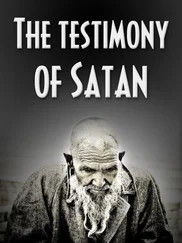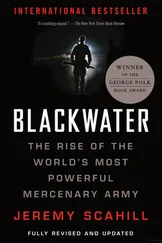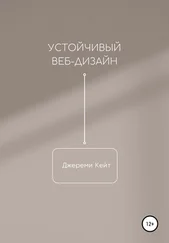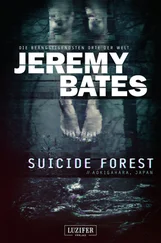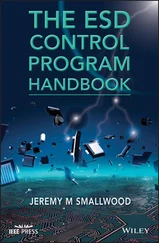You go in and you get some intelligence, and usually your intelligence comes through this apparatus too, and so you say, ‘Oh, this is really good actionable intelligence. Here’s “Operation Blue Thunder.” Go do it.’ And they go do it, and they kill 27, 30, 40 people, whatever, and they capture seven or eight. Then you find out that the intelligence was bad and you killed a bunch of innocent people and you have a bunch of innocent people on your hands, so you stuff ’em in Guantánamo. No one ever knows anything about that. You don’t have to prove to anyone that you did right. You did it all in secret, so you just go to the next operation. You say, ‘Chalk that one up to experience,’ and you go to the next operation. And, believe me, that happened.
Exum recalled hunting Izzat Ibrahim al Douri, one of Saddam’s senior military commanders, who had received the designation as the King of Clubs in the High Value Target deck of cards. They got a tip that Douri was in a particular house and conducted a night raid. As they began the raid, Exum’s Ranger team came under fire from two men. His team returned fire and gunned the men down. “We found out later that we were on two weeks old intelligence,” he remembered. “We killed them and, you know, we kind of realized later that these guys were just out guarding the neighborhood generator.” The men, Exum speculated, likely thought the Rangers were thieves. “Now, I didn’t lose any sleep over it, because these guys were shooting at me, but nonetheless, you start thinking about it from a strategic perspective, that’s a loss.”
McChrystal’s forces realized quickly that the Iraqi resistance was growing, not shrinking, even as various key members of the fallen Baath regime were taken out. McChrystal and his deputy, Mike Flynn, began assessing the state of the insurgency. At the time, JSOC had been “tailored down to a relatively small size in the months following the initial invasion,” McChrystal recalled. “We found a growing threat from multiple sources—but particularly from al Qaeda in Iraq. We began a review of our enemy, and of ourselves. Neither was easy to understand.” From JSOC’s small base outside of Baghdad, McChrystal and his team began mapping out the intel they had on AQI, using white dry-erase boards. “Like all too many military forces in history, we initially saw our enemy as we viewed ourselves,” McChrystal later wrote in an article for Foreign Policy:
Composed largely of foreign mujahideen and with an overall allegiance to Osama bin Laden but controlled inside Iraq by the Jordanian Abu Musab al Zarqawi, AQI was responsible for an extremely violent campaign of attacks on coalition forces, the Iraqi government, and Iraqi Shiites. Its stated aim was to splinter the new Iraq and ultimately establish an Islamic caliphate. By habit, we started mapping the organization in a traditional military structure, with tiers and rows. At the top was Zarqawi, below him a cascade of lieutenants and foot soldiers. But the closer we looked, the more the model didn’t hold. Al Qaeda in Iraq’s lieutenants did not wait for memos from their superiors, much less orders from bin Laden. Decisions were not centralized, but were made quickly and communicated laterally across the organization. Zarqawi’s fighters were adapted to the areas they haunted, like Fallujah and Qaim in Iraq’s western Anbar province, and yet through modern technology were closely linked to the rest of the province and country. Money, propaganda, and information flowed at alarming rates, allowing for powerful, nimble coordination. We would watch their tactics change (from rocket attacks to suicide bombings, for example) nearly simultaneously in disparate cities. It was a deadly choreography achieved with a constantly changing, often unrecognizable structure.
The insurgency was far more complex than those in Washington or at the Pentagon were letting on. But the decision to move ahead with targeting any and all insurgents went unchanged. Instead of stepping back, they doubled down. “If you see a fledgling insurgency start to develop, then it doesn’t take a genius to realize that by dragging people out of their homes in the middle of the night, by doing so in such a way that you are not communicating to the neighbors…why this person is being dragged out of their home in the middle of the night, it’s not hard to see how this could inflame tensions, how this could actually exacerbate drivers of conflict,” said Exum. “I think that that’s probably what happened in 2003.”
That’s not how Rumsfeld saw it. He wanted the insurgency obliterated and its leadership decapitated. McChrystal was left to figure out a system for achieving those goals. He began building up a structure to obtain and share information that could be used to facilitate a major expansion of house raids and targeted killing operations. “It became increasingly clear—often from intercepted communications or the accounts of insurgents we had captured—that our enemy was a constellation of fighters organized not by rank but on the basis of relationships and acquaintances, reputation and fame,” McChrystal remembered. “We realized we had to have the rapid ability to detect nuanced changes, whether the emergence of new personalities and alliances or sudden changes in tactics.” JSOC “had to process that new information in real time—so we could act on it,” he asserted. “A stream of hot cinders was falling everywhere around us, and we had to see them, catch those we could, and react instantly to those we had missed that were starting to set the ground on fire.”
The HVT Task Force was broken down into four subunits: Task Force West, whose main unit was a SEAL Team 6 squadron, with support from Rangers; Task Force Central, made up of a Delta squadron with support from Rangers; Task Force North, a Ranger battalion with a group of Deltas; and Task Force Black, a British SAS saber squadron, with British paratroopers. Each of these subunits could be supplemented by a Special Forces company specializing in “direct action” missions. The pace of the raids increased with intelligence gained from one raid leading to two or three others. “General McChrystal and Mike Flynn, his intelligence deputy, really invigorated that Task Force and did some pretty innovative things,” recalled Exum. “In the past, in large part because of the experience in Mogadishu in 1993, the iron rule was, you don’t go anywhere unless you’ve got company of Army Rangers in reserve. Well, under McChrystal, nobody was in reserve. I mean, people were hitting targets every single night, in a very dispersed way. You had Ranger platoons [conducting operations] that previously only Tier One Special Mission Units would be doing.”
McChrystal and Flynn’s fusion approach to gathering intelligence relied on an infrastructure for targeting known by the acronym F 3EA: Find, Fix, Finish, Exploit, and Analyze. “The idea was to combine analysts who found the enemy (through intelligence, surveillance, and reconnaissance); drone operators who fixed the target; combat teams who finished the target by capturing or killing him; specialists who exploited the intelligence the raid yielded, such as cell phones, maps, and detainees; and the intelligence analysts who turned this raw information into usable knowledge,” wrote McChrystal. “By doing this, we speeded up the cycle for a counterterrorism operation, gleaning valuable insights in hours, not days.”
Part of McChrystal and Flynn’s strategy for targeting the insurgency revolved around technology, while the other depended on taking prisoners and extracting information from them as quickly as possible.
Strategically, Flynn and McChrystal were hailed as geniuses. But the whole system was ultimately dependent on human intelligence, not technology. And with an incredibly diverse spectrum of insurgents attacking the occupation forces, that was a major challenge. It was this urgent need for HUMINT and the pressure from the White House and Pentagon to produce results to crush the insurgency (which they had declared did not exist) that would lead to a brutal regime of abuse and torture of detainees held by JSOC. Unsatisfied with the pace of interrogations being conducted by the CIA and other US agencies in the early stages of the Global War on Terror, Rumsfeld and Cambone developed a parallel rendition and detention program to the CIA black sites authorized under Greystone. The new Special Access Program went by various code names, including Copper Green, Matchbox and Footprint. With only some two hundred people read into the Special Access Program (SAP), the highly classified program put Stephen Cambone’s private intel shop in the Pentagon on steroids. “They weren’t getting anything substantive from the detainees in Iraq” early on in the invasion, a former senior intelligence official told Seymour Hersh. “No names. Nothing that they could hang their hat on. Cambone says, ‘I’ve got to crack this thing and I’m tired of working through the normal chain of command. I’ve got this apparatus set up—the black special-access program—and I’m going in hot.’ So he pulls the switch, and the electricity begins flowing.”
Читать дальше




